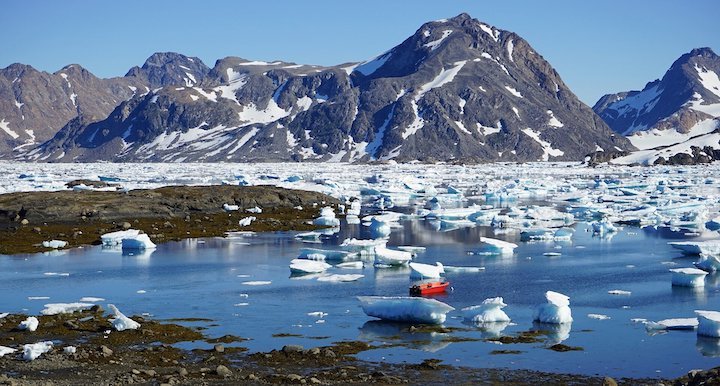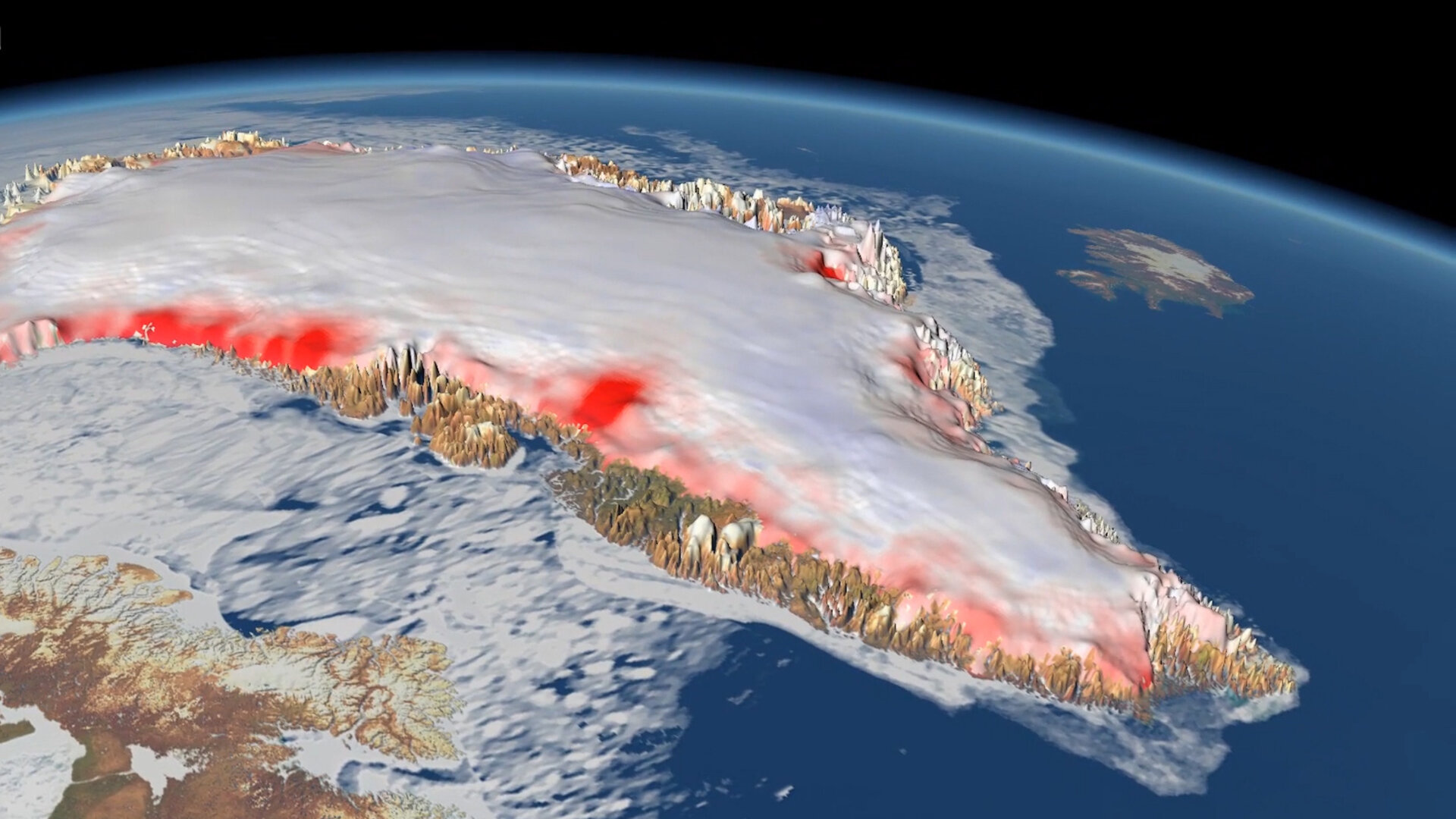14.12.2019

The Greenland ice sheet is losing mass seven times faster than in the 1990s, according to new research.
A paper published today in Nature details how an international team of 89 polar scientists, working in collaboration with ESA and NASA, has produced the most complete picture of Greenland ice loss to date.
They estimate that Greenland lost 3.8 trillion tonnes of ice between 1992 and 2018 – enough to push global sea level up by 10.6 millimetres. Over the study period, the rate of ice loss was found to have increased seven-fold from 33 billion tonnes per year in the 1990s to 254 billion tonnes per year in the last decade.
The Ice Sheet Mass Balance Inter-comparison Exercise (IMBIE), led by Andrew Shepherd from the University of Leeds and Erik Ivins at NASA’s Jet Propulsion Laboratory, compared and combined data from 11 satellites – including ESA’s ERS-1, ERS-2, Envisat and CryoSat missions, as well as the EU’s Copernicus Sentinel-1 and Sentinel-2 missions – to monitor changes in the ice sheet’s volume, flow and gravity.


Access the video
Using observation data spanning three decades, the team has produced a single estimate of Greenland’s net gain or loss of ice, known as mass balance.
Marcus Engdahl from ESA, one of the co-authors of the paper comments, “Satellite observations show that the Greenland ice sheet has reacted rapidly to environmental change by losing mass. This is especially worrying as the global mean sea-level rise caused by the melting ice sheet is irreversible in human or societal time scales.”
Previous satellite-based studies describe Greenland and Antarctica ice sheet losses and their contribution to global sea-level rise over recent decades.
This study condenses the available data and provides a consensus regarding Greenland’s ice loss, enabling more accurate projections of future sea-level rise to be made.
And, with coastal areas being some of the most densely populated areas on the planet, the findings will not only help communities to prepare, but also illustrate the urgent need for greenhouse-gas emissions to be curtailed worldwide.
In its last major assessment, the Intergovernmental Panel on Climate Change’s (IPCC) central climate warming scenario predicted a 60 centimetre rise in global sea level by 2100, putting 360 million people at risk of coastal flooding every year. The faster-than-expected rate reported by the IMBIE team shows that ice loss is following the IPCC’s worst-case climate warming scenario, which predicts that sea level will rise by an additional seven centimetres.
Prof. Shepherd explains, “As a rule of thumb, for every centimetre rise in global sea level, another six million people are exposed to coastal flooding around the planet. With this current trend, Greenland ice melting will cause 100 million people to be flooded each year by the end of the century – so 400 million in total due to sea-level rise.
“These are not unlikely events or small impacts; they are happening and will be devastating for coastal communities.”
Using satellite observations in combination with regional climate models, the team shows that just over half of the ice loss was because of increased surface meltwater runoff, driven by warming air. The remaining losses were the result of increased glacier flow triggered by rising ocean temperatures.
Ice losses reached a peak of 335 billion tonnes per year in 2011, a trend that since dropped to an average of 238 billion tonnes per year through to 2018 – but, nevertheless, remained seven times higher than observed during the 1990s.


Access the video
Prof. Shepherd comments, “The variable nature of the ice losses from Greenland over the three decades is a consequence of the wide range of physical processes affecting different sectors of the ice sheet and reflects the value of monitoring year-to-year fluctuations when attempting to close the global sea-level budget.”
ESA’s Director of Earth Observation Programmes, Josef Aschbacher, adds, “The findings reported by IMBIE illustrate the fundamental importance of satellites in monitoring the evolution of ice sheets, and for evaluating and refining the models used to predict the effects of climate change.
“Greenhouse-gas emissions are still going up, not down. We are leaving future generations to be confronted with increasingly severe impacts of climate change, such as rising sea levels. By taking the pulse of our planet, ESA is measuring change and highlighting the need to increase efforts to meet the internationally agreed goal to limit global warming to 1.5°C over pre-industrial levels.”
IMBIE is supported by ESA's EO Science for Society programme and ESA's Climate Change Initiative, which generates accurate and long-term satellite-derived datasets for 21 Essential Climate Variables, to characterise the evolution of the Earth system.
Quelle: ESA

